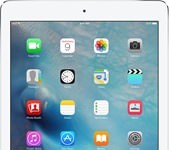“Someday you may be able to get the latest Harry Potter novel the day it comes out, without leaving your house. You will just plug a blank book into your computer, make an online payment and watch as the pages magically fill up with Harry Potter’s latest adventures. The whole transaction will take minutes and the book will look like any other on your shelf.” – Small Firm Hopes Its E-Paper Will Turn the Page on E-Book, in the Wall Street Journal Online.
The TeleRead take: One catch is that the first gizmos to allow this at-home verison of print-on-demand will cost more than $1,000. But then regular computer printers were also pretty expensive at first.
Competition
Of course, the technology from 3Netics Corp. of Richmond, Washington, could face stiff competition over the long term–and not just because of cost. One alternative, electronic-paper-style devices with flippable and reusable pages, could display an unlimited number of books, thereby ending concerns over physical storage space. Plus, you could enjoy books this way almost instantly without having to wait to print them out. Great for browsers, the human kind! That’s more or less the vision of the Last Book Project, and so far it still looks attainable. Both technologies would have their place.
Meanwhile here are further details from the Wall Street Journal on the interesting 3Netics’ project:
David O’Connor, founder and research director of 3Netics Corp., Redmond, Wash., hopes that day will come within two years.
Mr. O’Connor says the electronic paper technology his seven-person firm is developing will revolutionize the publishing industry by eliminating inventory and taking production efficiency to new levels. It’s not clear whether 3Netics is the only firm developing this type of technology, but if it works, publishers say, it would be the best thing to happen to electronic publishing, which has so far failed to catch on with consumers.
But it won’t be cheap. Mr. O’Connor estimates the blank book, microchip and coatings that are applied to the pages will cost about two cents a page to make, or $4 for the average paperback. But to receive the content, the book has to be plugged into a box that is connected to your computer. That box could cost as much as your computer — more than $1,000. Right now, it costs less than 50 cents to print a typical 200-page paperback book.
“We’re still playing with the chemistry, but it’s showing some promising results,” Mr. O’Connor said of his printing technology, which he hopes will reshape the $23 billion U.S. book publishing industry.
His research team has found a way to put readable text onto glass microscope slides, and is working on transferring that technology to paper. Mr. O’Connor estimates that a prototype is about three months away, but it will take at least two years before his company finds a way to mass-produce electronic paper, which is unlike anything currently on the market.
Many companies, including Xerox Corp.’s Gyricon unit, Sony Corp. and Philips Electronics NV, have tried their hand at e-books. But the e-books available on the market today haven’t posed a threat to paper and ink because readers often complain they are awkward, difficult to use and hard to read in outdoor light. In short, they lack the charming simplicity, ruggedness and durability of a real paper book.
3Netics stumbled on a way to revolutionize printing that could turn e-books into real books through its efforts in nanotechnology. While conducting research using ink-jet printing and self-assembled monolayers that are used to build DNA and proteins, Mr. O’Connor discovered that he could coat a piece of paper with these monolayers and make words appear by sending electrical charges to individual “pixels” on the page, each of which has a unique address.
Who says the e-book industry isn’t full of surprises?

































